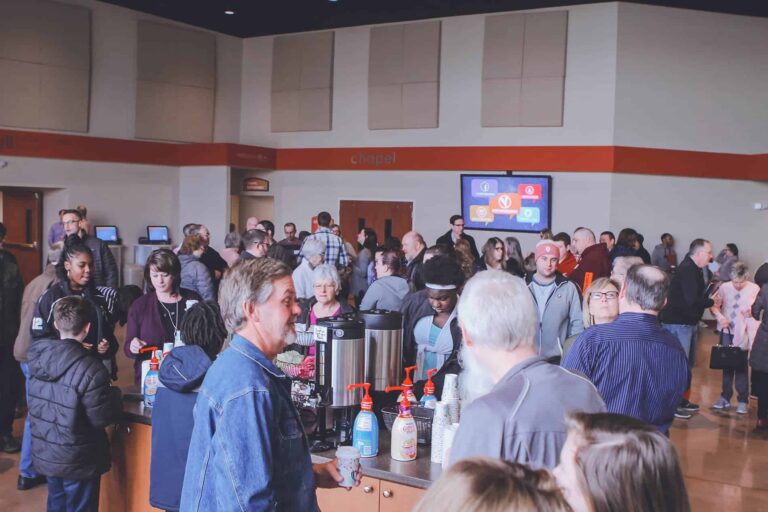Opioid addiction is a national crisis affecting millions of people across the United States, but not everyone has equal access to the treatment and support they need. For many underserved communities, including rural areas, low-income populations, and communities of color, the barriers to accessing opioid addiction treatment are substantial and often life-threatening.
In this post, we’ll explore the disparities in access to opioid addiction treatment and discuss solutions to ensure that underserved communities receive the help they need to combat the opioid crisis.
The Growing Crisis in Underserved Communities
While opioid addiction affects people of all demographics, certain populations face significant barriers to accessing effective treatment. Factors such as geographic isolation, lack of healthcare providers, cultural stigmas, and limited financial resources contribute to a growing crisis in underserved communities.
- Rural Areas: In rural parts of the country, the opioid crisis has hit hard. These areas often have limited healthcare infrastructure, meaning fewer addiction treatment centers, mental health providers, and resources. People in rural areas may have to travel long distances to access treatment, which can be a major barrier for those without reliable transportation.
- Low-Income Communities: For many people struggling with opioid addiction, the high cost of treatment is a major obstacle. While medication-assisted treatment (MAT) and therapy can be life-saving, the costs associated with care—such as medical bills, transportation, and time off work—can make it inaccessible to those living in poverty.
- Communities of Color: Racial and ethnic minorities have long faced disparities in healthcare access, and opioid addiction treatment is no exception. Structural racism in the healthcare system, cultural stigmas, and language barriers can prevent people in these communities from seeking or receiving appropriate care. Black and Latinx populations, in particular, are less likely to be prescribed opioid addiction treatments and more likely to face punitive measures for drug use rather than being offered treatment options.
These disparities have deadly consequences. According to the Centers for Disease Control and Prevention (CDC), overdose death rates among Black and Native American communities have increased sharply in recent years, reflecting a growing need to address these inequities.
Barriers to Accessing Opioid Addiction Treatment
Understanding the barriers to accessing opioid addiction treatment is key to developing effective solutions. Some of the most common obstacles faced by underserved communities include:
- Lack of Treatment Providers: In many rural or economically disadvantaged areas, there simply aren’t enough addiction treatment providers to meet the demand. People may have to wait weeks or months to access care, which can be too long for someone in crisis.
- Cost of Treatment: Opioid addiction treatment, especially medication-assisted treatment (MAT), can be expensive. For those without insurance or with inadequate coverage, the cost of care may be prohibitive. Many treatment centers, particularly those in low-income areas, are underfunded and lack the resources to provide affordable care to everyone who needs it.
- Transportation and Geographic Isolation: For people living in rural areas or in areas without reliable public transportation, accessing treatment can be a logistical nightmare. Many people have to travel long distances to reach the nearest treatment center, and for those without a car or access to transportation, this can make it nearly impossible to get help.
- Stigma and Discrimination: Stigma surrounding opioid addiction is prevalent across all communities, but it can be especially damaging in communities where addiction is seen as a moral failing rather than a treatable disease. Fear of judgment, discrimination, and criminalization often prevents individuals from seeking help. In communities of color, there is also the added burden of systemic racism, which can make people less likely to trust healthcare providers or feel welcome in treatment settings.
Bridging the Gap: Solutions for Expanding Access to Treatment
To address the disparities in opioid addiction treatment, we need to implement targeted solutions that reduce barriers to care and ensure that everyone, regardless of their background, can access life-saving treatment. Here are a few strategies for bridging the gap:
- Increase Funding for Treatment Programs in Underserved Areas
One of the most effective ways to expand access to treatment is to increase funding for addiction treatment programs in underserved areas, including rural regions and low-income communities. Government funding, grants, and public-private partnerships can help create more treatment centers, hire more healthcare providers, and expand outreach programs to reach those in need.
- Expand Telemedicine Services
Telemedicine has the potential to revolutionize opioid addiction treatment, particularly in rural or geographically isolated areas. By allowing individuals to access treatment from the comfort of their homes, telemedicine can remove many of the barriers associated with geographic isolation, transportation, and provider shortages. Telemedicine can also make it easier for people to access mental health counseling, medication management, and follow-up care, all of which are critical for long-term recovery.
- Increase Insurance Coverage for Addiction Treatment
Insurance coverage is one of the biggest determinants of whether someone can access addiction treatment. Expanding insurance coverage for opioid addiction treatment—especially medication-assisted treatment (MAT) and behavioral therapies—is crucial for making care more affordable and accessible. State and federal programs, such as Medicaid, should be expanded to cover the full spectrum of addiction services, including mental health care and holistic therapies.
- Address Cultural and Racial Disparities in Treatment
Culturally competent care is essential for addressing the disparities in opioid addiction treatment for communities of color. Treatment centers and healthcare providers need to be trained in cultural competency to better serve diverse populations and reduce the stigma surrounding addiction in these communities. This includes hiring more providers from diverse backgrounds, offering treatment in multiple languages, and working to build trust with communities that have historically been marginalized by the healthcare system.
- Support Harm Reduction Programs
Harm reduction programs, such as needle exchanges, supervised injection sites, and naloxone distribution, are critical tools for saving lives and reducing the harm caused by opioid addiction. These programs provide individuals with the resources they need to stay safe, reduce the risk of overdose, and connect with treatment when they’re ready. Expanding harm reduction services, particularly in underserved communities, can help reduce the stigma surrounding addiction and provide a bridge to treatment.
- Create Community-Based Outreach Programs
Community-based outreach programs can play a key role in reaching people who may not otherwise seek treatment. By partnering with local organizations, churches, and community leaders, these programs can provide education about opioid addiction, offer support for individuals in recovery, and help connect people with treatment services. Outreach programs can also help reduce stigma by fostering understanding and compassion within the community.
Conclusion: Ensuring No One is Left Behind
The opioid crisis continues to devastate communities across the country, but not everyone has equal access to the help they need. Bridging the gap in opioid addiction treatment requires targeted solutions that address the specific challenges faced by underserved communities. Whether through expanding telemedicine, increasing funding for treatment programs, or addressing cultural disparities, it’s critical that we work together to ensure that all individuals—regardless of where they live or who they are—have access to life-saving treatment.
No one should be left behind in the fight against opioid addiction. By taking a holistic, community-focused approach, we can create a more equitable system of care that meets the needs of everyone affected by the opioid crisis.






